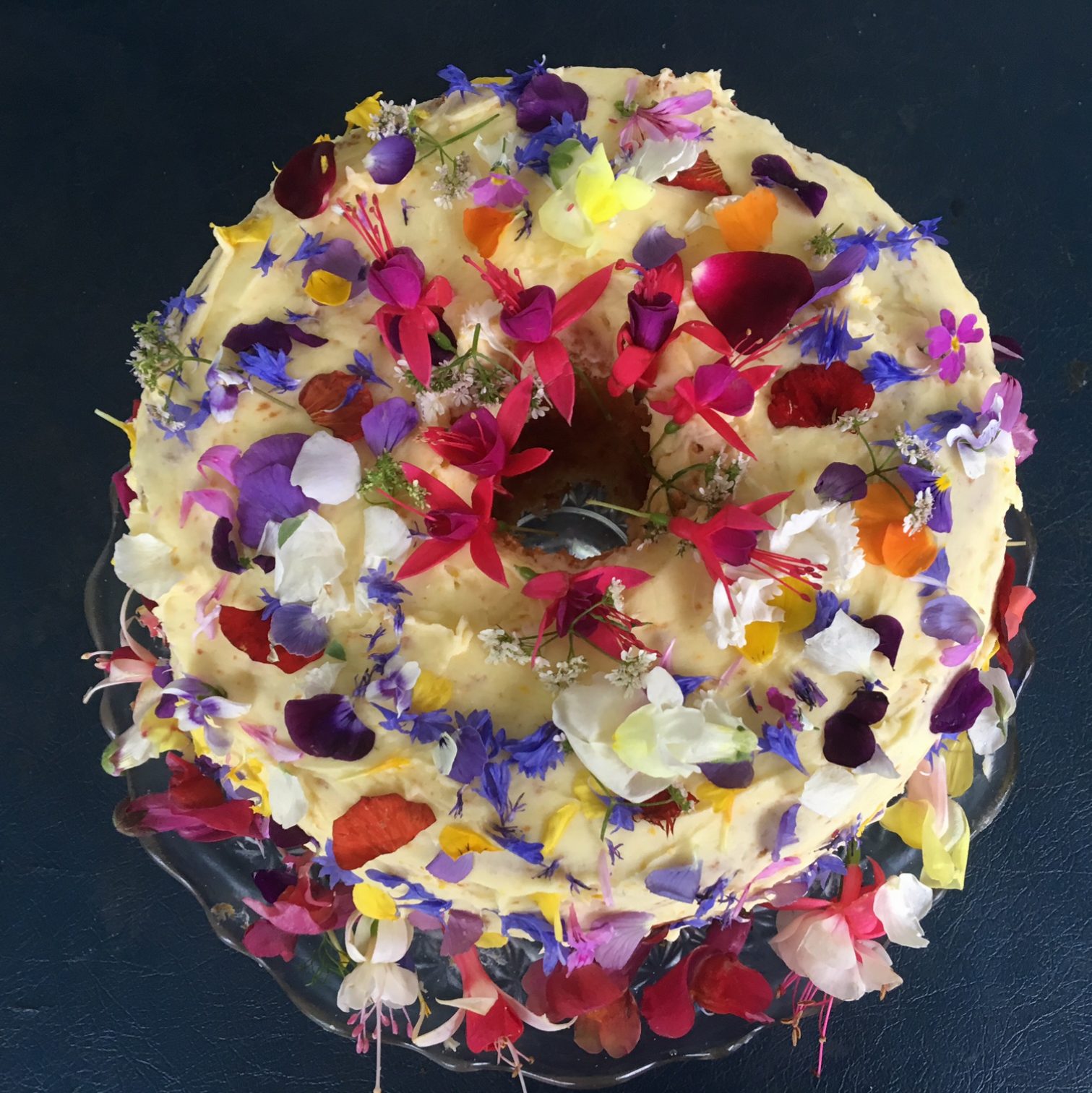Jane’s Orange Chiffon Cake
Inroduction
About this Recipe
By: Sheridan Rogers
This heavenly, “light as a feather” chiffon cake was the centrepiece of a high tea which I attended recently at a friend’s home. Made by Jane Busby, a friend of the family, it disappeared almost as soon as it was set down on the table. It was a revelation: less sweet and more flavoursome than an angel cake, and much moister than a sponge cake. I found out later that the chiffon cake was invented by Harry Baker in 1927, a Hollywood insurance salesman who catered cakes for private parties as a sideline. He later sold the secret recipe for his chic new cake to General Mills, an industrial food company. You will need an angel cake tin with a removable base, preferably with three attached feet along the rim to elevate the cake after you invert it. Do not grease the tin.

Ingredients
- free range or organic eggs 8 medium, at room temperature, separated
- caster sugar 345g (1 1/2 cups)
- vegetable oil (such as safflower, bran, corn or sunflower) 185ml (3/4 cup)
- fresh orange juice 185ml (3/4 cup)
- lemon 1/2, finely grated zest
- self-raising flour 225g (1 1/2 cups), sifted
- softened unsalted butter 225g
- pure icing sugar 500g (4 cups), sifted
- pure cream 3 -4 tablespoons
- organic orange zest 3 -4 teaspoons
- Pesticide-free edible flowers
Preheat oven to moderate (180degC/160degC fan-forced). Whisk egg whites to soft peaks. Slowly add 115g (1/2 cup) of the sugar and continue whisking until egg whites are stiff but not dry. In a separate bowl, whisk the egg yolks with remaining sugar until light and fluffy. Add the oil and continue beating for a minute or two until well combined. Add the orange juice and lemon zest. Add the flour carefully and beat until well combined. Using a metal spoon, fold the egg whites through the mixture (draw the spoon through in figure of 8 motion) until just mixed through. Pour mixture into ungreased tin, place in oven and bake for 1 hour or until a skewer inserted in the middle comes out clean. The cake now needs to hang upside down until completely cool. You can do this by balancing the middle funnel on the neck of a bottle. If your tin has three attached feet along the rim, simply invert it on the bench top and let it hang until cool. This is an important step to prevent the cake from collapsing. When completely cool, run a knife around the outside of the cake and the funnel. Lift the base out of the tin and use the knife to carefully ease base cake off base of tin. For the Buttercream Icing: Cream together the butter and icing sugar in a medium mixing bowl – use electric beaters and start slowly to prevent the icing sugar going everywhere. Add the cream and orange zest and beat until well incorporated. Use a small spatula, dipped in warm water, to spread the icing evenly over the top and sides of the cakes. Scatter over the edible flowers. Tip: use blood oranges when they’re in season for a change of colour and taste.
